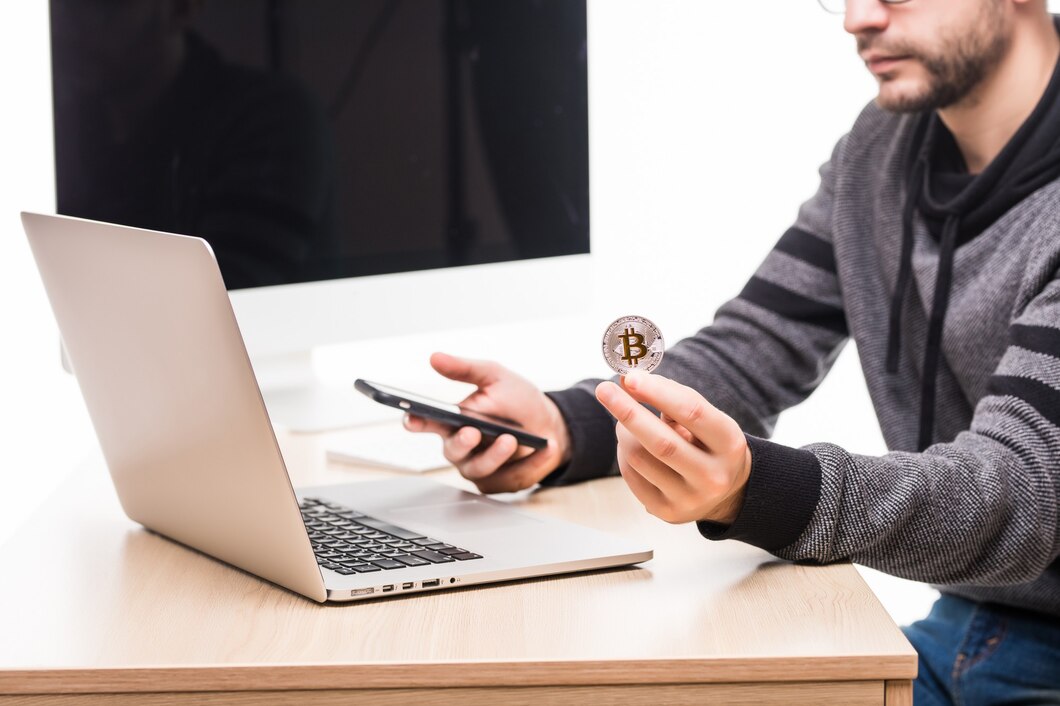How to Buy and Sell Crypto: A Guide to the Different Exchanges and Platforms
Cryptocurrency is a digital or virtual currency that uses cryptography for security and operates independently of a central authority, such as a government or a bank. It is decentralized and relies on blockchain technology to record and verify transactions. The most well-known cryptocurrency is Bitcoin, but there are thousands of other cryptocurrencies, each with its own unique features and use cases. Explore the features of https://quma-ai.com/ and achieve your investment goals.
How to buy and sell cryptocurrency:
Buying Cryptocurrency:
- Choose a Cryptocurrency Exchange: The first step is to select a cryptocurrency exchange where you can buy and sell digital currencies. Some popular exchanges include Coinbase, Binance, Kraken, and Bitstamp. Research and choose an exchange that is reputable and suits your needs.
- Create an Account: Sign up on the chosen exchange platform. This typically involves providing your personal information and verifying your identity in compliance with Know Your Customer (KYC) regulations.
- Secure Your Account: Enable two-factor authentication (2FA) and use a strong, unique password to enhance the security of your exchange account.
- Deposit Funds: To buy cryptocurrency, you’ll need to deposit funds into your exchange account. You can usually deposit fiat currency (like USD, EUR, etc.) through bank transfers, credit/debit cards, or other payment methods, depending on the exchange’s options.
- Place an Order: Once your funds are deposited, you can place an order to buy the cryptocurrency of your choice. There are different types of orders, such as market orders (buy/sell at the current market price) and limit orders (set a specific price at which you want to buy/sell). You’ll need to specify the amount and price you’re willing to pay.
- Wallet: It’s advisable to transfer your purchased cryptocurrency to a secure wallet. Wallets come in various forms, including hardware wallets, software wallets, and mobile wallets. This adds an extra layer of security and control over your assets.
Selling Cryptocurrency:
- Log In to Your Exchange Account: If you haven’t already, log in to your Exchange account.
- Deposit Your Cryptocurrency: If your cryptocurrency is not already on the exchange, you need to deposit it into your exchange wallet. You can do this by selecting the cryptocurrency and clicking on the deposit option.
- Place a Sell Order: Similar to buying, you’ll need to place a sell order. Specify the amount and price at which you want to sell your cryptocurrency. You can choose between market and limit orders.
- Confirm the Order: Review your order details and confirm the sale. If you place a market order, the sale will execute instantly at the current market price. If you place a limit order, it will execute when the market reaches the price you set.
- Withdraw Funds: Once your cryptocurrency is sold, you can withdraw the proceeds as fiat currency to your bank account or to another wallet. Be aware of withdrawal fees and processing times.
- Tax Considerations: Keep records of your cryptocurrency transactions, as you may be required to report and pay taxes on your capital gains. Tax regulations vary by country, so it’s important to understand your local tax laws.
Different Types of Cryptocurrency Exchanges:
Cryptocurrency exchanges come in various forms, each catering to different user needs and preferences. Here are the main types of cryptocurrency exchanges:
Centralized Exchanges (CEX):
- Centralized exchanges are the most common and user-friendly type of cryptocurrency exchange.
- They operate as intermediaries, connecting buyers and sellers.
- These exchanges are highly regulated and often require users to complete KYC verification.
- Examples: Coinbase, Binance, Kraken, Bitstamp.
Decentralized Exchanges (DEX):
- DEXs operate without a central authority and enable peer-to-peer trading directly from users’ wallets.
- They offer more privacy and control over your funds.
- Users don’t need to complete extensive KYC procedures in many cases.
- Examples: Uniswap, SushiSwap, PancakeSwap.
Hybrid Exchanges:
- Hybrid exchanges combine features of centralized and decentralized exchanges, offering both security and user control.
- They provide the liquidity of centralized exchanges while allowing users to retain control of their private keys.
- Examples: IDEX, Kyber Network.
Peer-to-Peer Exchanges (P2P):
- P2P exchanges enable users to trade directly with one another.
- They often facilitate fiat-to-crypto trades and provide escrow services to secure the transaction.
- Examples: LocalBitcoins, Paxful, LocalCryptos.
Cryptocurrency Brokerage Services:
- Cryptocurrency brokers act as intermediaries between users and exchanges.
- They offer a simplified and user-friendly interface for buying and selling cryptocurrencies.
- Brokers often provide additional services like education and customer support.
- Examples: eToro, Robinhood (for certain regions).
Cryptocurrency ATMs:
- Cryptocurrency ATMs allow users to buy and sometimes sell cryptocurrencies using cash or credit cards.
- They are physical machines that provide a quick way to acquire cryptocurrencies.
- ATM locations can vary, and fees may be relatively high.
Things to Consider When Choosing a Cryptocurrency Exchange:
Security: The security of your funds is paramount. Look for exchanges with robust security measures, including two-factor authentication (2FA), cold storage of funds, and a track record of handling security incidents.
Regulation and Compliance: Consider the regulatory status of the exchange in your region. Some exchanges are fully compliant with financial regulations and require extensive KYC verification, while others offer more privacy.
- User Interface: The user interface should be intuitive and user-friendly. A well-designed platform will make trading and managing your account easier.
- Trading Pairs: Ensure that the exchange offers the cryptocurrency trading pairs you are interested in. Larger exchanges typically have a broader selection of coins.
- Liquidity: Higher liquidity means it’s easier to buy or sell assets without significant price slippage. Larger exchanges tend to have better liquidity.
- Fees: Exchanges charge various fees, including trading fees, withdrawal fees, and deposit fees. Compare fee structures to find the most cost-effective option for your trading style.
- Customer Support: Consider the quality and availability of customer support. Prompt and helpful support can be crucial when you encounter issues.
- Geographic Availability: Check if the exchange operates in your region and offers services in your preferred fiat currency.
- Reputation: Research the exchange’s reputation by reading user reviews, checking for any past security breaches, and evaluating the exchange’s history.
- Additional Features: Some exchanges offer additional features like staking, lending, and margin trading. If you’re interested in these services, factor them into your decision.
- Privacy: Depending on your preferences, you may want to choose an exchange that aligns with your privacy requirements. Some exchanges may require less personal information.
- Mobile Apps: If you prefer trading on the go, consider whether the exchange offers a mobile app with the features you need.
- Trading Tools: Some exchanges provide advanced charting tools and trading options. Assess whether the exchange’s tools align with your trading strategy.
It’s essential to conduct thorough research and due diligence before selecting a cryptocurrency exchange. Your choice should align with your trading goals, risk tolerance, and geographic location, while also taking into account the factors mentioned above to ensure a safe and satisfactory trading experience.


















